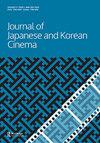In/visibility in post-war Okinawan images 2
引用次数: 0
Abstract
Following on from the spring issue, we are proud to present the second part of our special section on postwar images of Okinawa. This two-part special section comes at an apt time, for next year witnesses the fiftieth anniversary of the reversion of Okinawa to Japan. For Okinawans, the reversion was a massive historical event that marked the end of the US military’s twenty-seven-year occupation of the islands since the end of the Pacific War. The transition of sovereignty had a significant impact on the islanders’ social life, from the change of currency to the switching of car lanes from the right to the left on 30 July 1978, which, not so surprisingly, resulted in a number of accidents. However, to the disappointment of many locals, the military bases stayed on the islands, in accordance with the treaty of mutual cooperation and security between the two countries. The barbed-wire fences of the bases are still a prominent feature of the Okinawan landscape, with approximately 15 percent of the main island still occupied by the US. The islanders’ antipathy, or at least ambivalence, toward the reversion and its consequences has often been swamped by the celebratory images of the exotic islands from mainland Japan. Thus, when viewing films and TV series set in Okinawa, or those featuring Okinawa as their topic, one needs to pay attention not only to what is being shown but also to what remains invisible, lurking in the margins of representation. Although the articles compiled here are not intended to draw a comprehensive picture of the complex power relations of Okinawa, Japan and the US as manifested in the cinematic representations of the islands, it is our hope that these articles, along with those in the first issue, throw critical light on the postwar visual history of Okinawa. Takuya Tsunoda’s article focuses on Japanese New Wave filmmaker Hani Susumu’s 1958 educational short film The Living Sea (Umi wa ikiteiru). Drawing on the concept of dispositif, Tsunoda strategically analyses the composition and decoupage of film images, as well as the reflexivity between the aquarium and film viewing situations. He demonstrates that Hani’s film, shot on Hateruma and Ishigaki Islands under the US military occupation, contributes to the knowledge construction of Japan’s periphery in the cultural infrastructure of postwar Japan, while avoiding a simplistic dichotomy of Okinawa versus mainland Japan. Moving from occupation to post-occupation, Patrick Chimenti examines media responses to the reversion in the leftist filmmaking group Nihon Documentarist Union’s documentary film Asia Is One (Ajia wa hitotsu, 1973) and Okinawan playwright Chinen Seishin’s stage production Human Pavilion (Jinruikan, 1976). Approaching the biopolitical regime in postwar Okinawa and in particular the post-reversion Okinawan identity,在战后冲绳图像中的可视性2
继春季刊之后,我们很荣幸地推出关于冲绳战后图像的特刊第二部分。这个由两部分组成的特别部分恰逢其时,因为明年是冲绳回归日本50周年。对冲绳人来说,回归是一个巨大的历史事件,标志着自太平洋战争结束以来美军对冲绳岛长达27年的占领结束。主权的过渡对岛民的社会生活产生了重大影响,从货币的改变到1978年7月30日车道从右向左切换,这并不奇怪,导致了一些事故。然而,令许多当地人失望的是,根据两国之间的相互合作与安全条约,军事基地留在了岛上。基地的铁丝网仍然是冲绳景观的一个突出特征,大约15%的主岛仍然被美国占领。岛民对回归及其后果的反感,或者至少是矛盾心理,经常被来自日本大陆的异国岛屿的庆祝画面淹没。因此,当观看以冲绳为背景的电影和电视剧,或以冲绳为主题的电影和连续剧时,人们不仅需要关注正在播放的内容,还需要关注隐藏在表现边缘的无形内容。尽管这里汇编的文章并不是为了全面描绘冲绳、日本和美国复杂的权力关系,正如这些岛屿的电影表现一样,但我们希望这些文章与第一期文章一起,对冲绳战后的视觉历史进行批判性的解读。Tsunoda Takuya的文章聚焦于日本新浪潮电影制作人Hani Susumu 1958年的教育短片《活海》(Umi wa ikiteiru)。Tsunoda运用处置的概念,战略性地分析了电影图像的组成和分解,以及水族馆和电影观看情况之间的反射性。他证明,哈尼的电影拍摄于美国军事占领下的芥子岛和石垣群岛,有助于战后日本文化基础设施中日本周边地区的知识建设,同时避免了冲绳与日本大陆的简单二分法。从占领到占领后,帕特里克·奇门蒂考察了媒体对左翼电影制作团体日本纪录片作家联盟的纪录片《亚洲是一体的》(Ajia wa hitotsu,1973)和冲绳剧作家Chinen Seishin的舞台剧《人亭》(Jinruikan,1976)中逆转的反应。探讨战后冲绳的生物政治制度,特别是回归后的冲绳人身份,
本文章由计算机程序翻译,如有差异,请以英文原文为准。
求助全文
约1分钟内获得全文
求助全文
来源期刊

Journal of Japanese and Korean Cinema
Arts and Humanities-Visual Arts and Performing Arts
CiteScore
0.60
自引率
0.00%
发文量
16
期刊介绍:
Journal of Japanese and Korean Cinema is a fully refereed forum for the dissemination of scholarly work devoted to the cinemas of Japan and Korea and the interactions and relations between them. The increasingly transnational status of Japanese and Korean cinema underlines the need to deepen our understanding of this ever more globalized film-making region. Journal of Japanese and Korean Cinema is a peer-reviewed journal. The peer review process is double blind. Detailed Instructions for Authors can be found here.
 求助内容:
求助内容: 应助结果提醒方式:
应助结果提醒方式:


